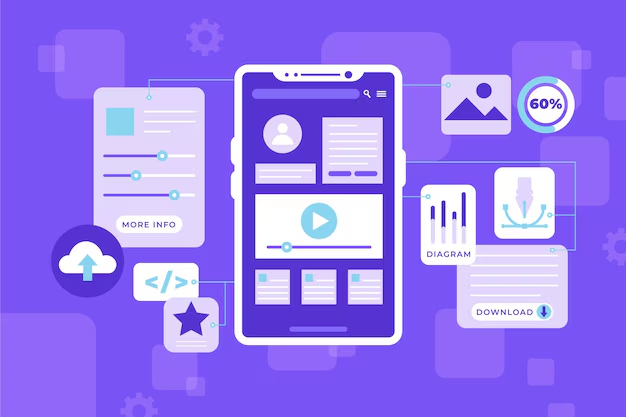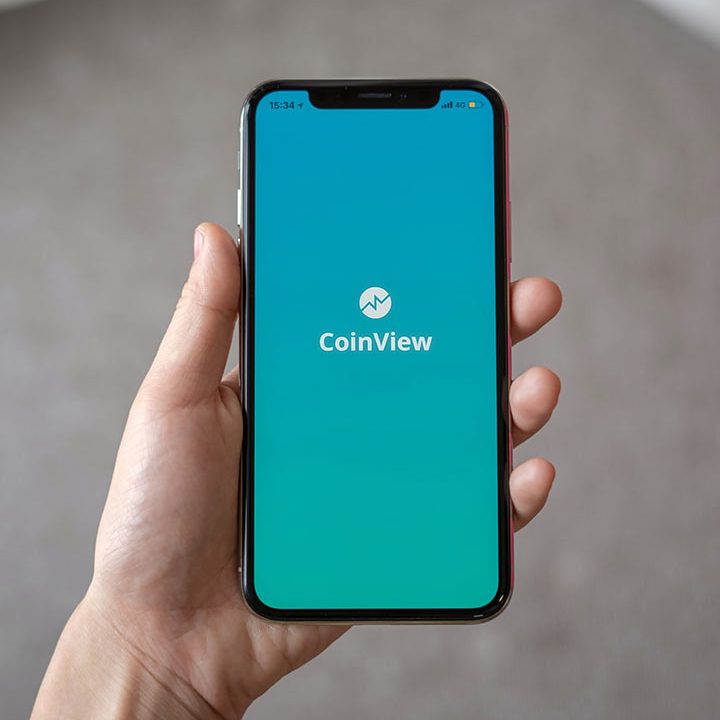The Ultimate Guide to Mobile App Development in 2025: Trends, Process, and Future Scope
The digital era is ruled by mobile apps. From morning alarms to online shopping, fitness tracking to food delivery, mobile applications have become the heartbeat of modern life. Every tap, swipe, and click connects users to brands, services, and solutions — shaping how we live and interact.
If you’re a business owner, startup founder, or tech enthusiast, understanding mobile app development in 2025 is no longer optional — it’s essential. Whether you’re planning to launch your first app or scale an existing one, knowing how mobile apps are created, optimized, and delivered can define your success in the competitive digital marketplace.
Let’s explore the complete journey — from concept to code, and from development to deployment — in this comprehensive guide.
What Is Mobile App Development?
Mobile app development is the process of designing, coding, and deploying software applications specifically tailored for mobile devices such as smartphones and tablets. These apps run on platforms like Android, iOS, and cross-platform systems — utilizing the device’s built-in capabilities such as GPS, camera, sensors, notifications, and biometric security.
What makes mobile apps unique is their ability to integrate native device features, delivering a smoother, faster, and more interactive experience than traditional mobile websites.

In 2025, mobile app development is evolving beyond just creating digital tools. It’s about crafting experiences — merging artificial intelligence, augmented reality, cloud computing, and predictive analytics to build solutions that anticipate user needs.
Why Mobile Apps Dominate the Digital Landscape
With over 6.8 billion smartphone users globally, mobile apps have become the core of digital engagement. Consumers spend nearly 90% of their mobile screen time using applications — shopping, socializing, learning, and working.
From small businesses to global enterprises, every organization now recognizes the power of having a dedicated mobile app. A well-built app doesn’t just boost revenue — it strengthens customer relationships, personalizes experiences, and keeps your brand relevant in a fast-moving market.
Whether it’s a fintech startup building a secure payment solution, an eCommerce platform launching a custom shopping app, or an education brand offering virtual learning — mobile app development empowers businesses to innovate and connect.
The Mobile App Development Process: From Idea to Launch
Creating a mobile app may sound complex, but with the right roadmap, the journey becomes structured and achievable. Here’s a step-by-step look at how modern apps come to life:
1. Ideation and Strategy
Every successful app begins with an idea — but not just any idea. It must solve a real-world problem or enhance convenience for users. Developers and stakeholders brainstorm to identify:
- The app’s purpose and unique selling point
- Target audience and business goals
- Required features and potential monetization models
At this stage, defining a clear strategy prevents scope creep and sets the foundation for efficient development.
2. Market Research and Validation
Before writing a single line of code, businesses must validate their concept through market research. Analyzing competitors, studying user pain points, and identifying feature gaps helps refine the idea and ensures the app meets actual demand.
Tools like Google Trends, App Annie, and Sensor Tower provide valuable insights into audience behavior and market opportunities. Remember — understanding your users’ needs early can save months of development and thousands in cost.
3. UX/UI Design and Prototyping
Design is where imagination meets functionality. The user experience (UX) and user interface (UI) define how users interact with your app.
Modern app designers focus on simplicity, accessibility, and emotion-driven design. Wireframes and interactive prototypes visualize app flow before development starts.
Key trends in 2025 app design include:
- Minimalist layouts with high readability
- Dark mode options for user comfort
- Micro-interactions to enhance engagement
- Voice-activated commands and AI-powered personalization
A well-designed app isn’t just attractive — it’s intuitive, fast, and user-first.
4. Development and Coding
This is where the app takes shape. Developers build both the front-end (user-facing interface) and the back-end (server, database, and logic).
There are several approaches to mobile app development:
- Native Development – Built specifically for iOS (Swift/Objective-C) or Android (Kotlin/Java). Ideal for performance-intensive apps.
- Cross-Platform Development – Uses frameworks like Flutter or React Native to run one codebase on multiple platforms. Faster and cost-effective.
- Hybrid Development – Combines native and web technologies for moderate performance and flexible deployment.
- Progressive Web Apps (PWA) – Browser-based apps that mimic native functionality without installation.
- The choice depends on project goals, budget, performance needs, and future scalability.
5. Testing and Quality Assurance
A flawless app experience is non-negotiable. QA testers rigorously check for:
- Functionality across different devices and OS versions
- Speed and responsiveness
- Security vulnerabilities
- User feedback through beta testing
Automated testing tools like Appium, TestFlight, and Firebase Test Lab help streamline this process. The goal is to ensure that every interaction feels smooth, bug-free, and reliable before public release.
6. Deployment and Launch
Once tested, the app is submitted to app stores — Google Play for Android and the Apple App Store for iOS.
Each platform has specific publishing guidelines, metadata requirements, and review processes. After approval, marketing campaigns, social promotions, and influencer partnerships help drive installs and visibility.
A successful launch isn’t just about downloads — it’s about retention. That’s where post-launch analytics come in.
7. Maintenance and Upgrades
App development doesn’t end at launch. Continuous improvement is key to keeping users engaged. Regular updates fix bugs, enhance performance, and introduce new features.
Integrating analytics tools like Firebase Analytics or Mixpanel provides real-time insights into user behavior, allowing developers to adapt quickly to evolving trends.
Mobile App Development Trends Shaping 2025
The mobile ecosystem changes fast. Here are the top innovations redefining how apps are built and used today:
- AI & Machine Learning Integration: Personalized recommendations, predictive analytics, and intelligent automation are now standard.
- 5G-Powered Experiences: Faster speeds enable AR/VR, HD streaming, and IoT-driven apps.
- Wearable Device Compatibility: Apps now extend to smartwatches, fitness bands, and even AR glasses.
- Blockchain Technology: Ensures secure transactions, decentralized apps (DApps), and transparent data sharing.
- Low-Code/No-Code Development: Platforms like FlutterFlow and Innoric Infosystems empower non-developers to create apps with drag-and-drop simplicity.
- Super Apps: All-in-one platforms combining multiple functions (payments, chat, shopping) in one app are rising, inspired by models like WeChat and Grab.
Choosing the Right Mobile App Development Platform
Selecting a development framework influences cost, performance, and scalability. Here’s a quick overview of the most powerful platforms used in 2025:
- Flutter (by Google): Ideal for high-performance cross-platform apps with a native-like feel.
- React Native (by Meta): Flexible, open-source framework with a strong developer community.
- Swift (for iOS): Best for building robust and secure Apple applications.
- Kotlin (for Android): Clean, modern, and favored by Google for Android app development.
- Xamarin: Perfect for developers familiar with C# and .NET ecosystems.
Each tool has its strengths — your choice should match your app goals and target audience.
Native, Hybrid, or PWA – Which One to Choose?
- Native Apps deliver the best performance, offline functionality, and hardware integration — ideal for gaming or enterprise apps.
- Hybrid Apps balance cost and flexibility, making them great for startups.
- Progressive Web Apps are lightweight, instantly accessible, and require no app store downloads — perfect for content or e-commerce brands.
In 2025, many businesses prefer a hybrid-first strategy, developing lightweight MVPs (Minimum Viable Products) quickly before investing in full-scale native versions.
The Future of Mobile App Development
As technology evolves, so does user expectation. The next generation of apps will be smarter, faster, and more immersive. Here’s what’s coming next:
- Voice-driven experiences using natural language processing
- Immersive AR and VR integration in retail, healthcare, and education
- Eco-friendly app development with reduced energy consumption
- Personalized AI assistants embedded into apps for real-time help
The future isn’t about building apps that just function — it’s about building apps that feel human.
Conclusion: Turning Ideas into Digital Reality
Mobile app development has grown from a luxury to a necessity. In a world where every business is digital-first, an app is your direct bridge to customers. It brings convenience, credibility, and conversion — all in one screen.
Whether you’re creating a startup app, a game-changing utility, or a global enterprise solution, success lies in strategic planning, smart design, and continuous innovation.
2025 belongs to those who dare to create — and mobile app development is your ticket to that digital future.







